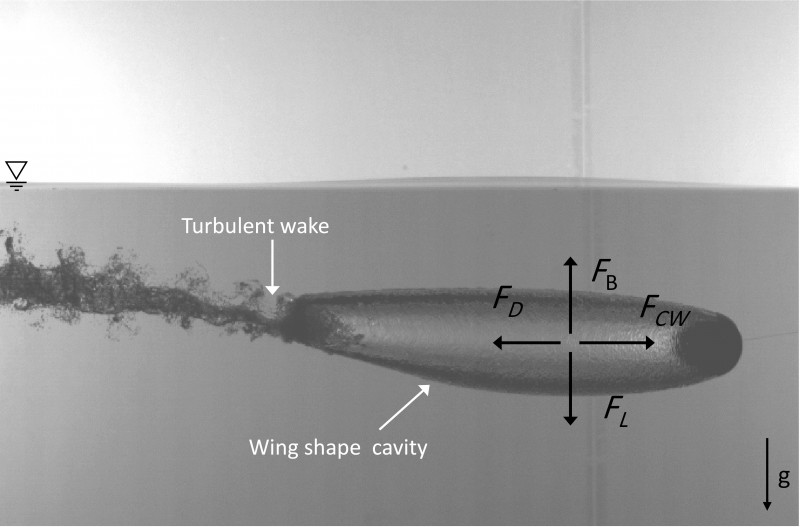Skipping Stones and the dynamics of Buoyant Spheres and Air Cavities
Inspired by the need to safeguard marine animals and promote sustainable solutions within marine environments, an interdisciplinary team of researchers from King Abdullah University of Science and Technology in Saudi Arabia and Sofia University in Bulgaria are delving into the hydrodynamics of buoyant objects at the air-water interface.
By studying these dynamics, their goal is to expand the understanding of fluid hydrodynamics and complex surface interactions – and advance fields such as the design and performance of marine engineering systems, buoy systems, and underwater vehicles.
In Physics of Fluids, from AIP Publishing, the team presents a study of the dynamics of buoyant spheres (think skipping stones) at the air-water interface. Their work revealed complex hydrodynamics involved in forming horizontal air cavities and the transition between floating and skipping.
The study of fluidics and physics within the context of buoyancy involves several key principles: buoyancy, hydrodynamics, fluid resistance, and a Reynolds number.
Buoyancy refers to the upward force exerted on an object immersed within a fluid, while hydrodynamics focuses on the motion of the fluid and its interactions with solid objects.
Fluid resistance, or drag, occurs when an object moving through a fluid experiences resistance due to the friction between its surface and the fluid. This resistance depends on factors such as an object’s shape, size, speed, and fluid properties.
To further analyse fluid behaviour, scientists use a dimensionless parameter, a Reynolds number, to determine the type of flow around an object.

One of the team’s key findings is that as the pulling force and speed of the spheres increase, their behaviour becomes more irregular. “The spheres exhibit oscillatory motions, diving into the water, rising toward and piercing the water surface, and attaching underwater air cavities in a horizontal direction,” said co-author Farrukh Kamoliddinov of KAUST.
They also discovered larger pulling angles result in different air-cavity lengths, larger skipping distances, and earlier water exit behaviour – meaning that the pulling angle plays a significant role in shaping the hydrodynamics of the buoyant spheres.
And the cavity maintains a steady horizontal motion at a constant velocity over a certain distance. The air cavity formation exhibits distinct features, including an inverted wing shape and a turbulent wake behind it. This steady and controlled horizontal motion of the cavity provides insight into complex fluid dynamics and opens the door to further exploration and applications.
“Understanding buoyant sphere dynamics and cavity formation can inspire new designs and innovations in fields beyond marine engineering,” said Kamoliddinov. “It can potentially lead to new novel propulsion systems, drag reduction strategies, fluidic propulsion systems, and fluidic devices that harness the characteristics of buoyant spheres.”
The article “Skipping under water: Buoyant sphere hydrodynamics at the air-water interface” is authored by Farrukh Kamoliddinov, Ivan U. Vakarelski, Sigurdur T. Thoroddsen, and Tadd T. Truscott. It will appear in Physics of Fluids on July 11, 2023 (DOI: 10.1063/5.0153610). After that date, it can be accessed at https://doi.org/10.1063/5.0153610.




















